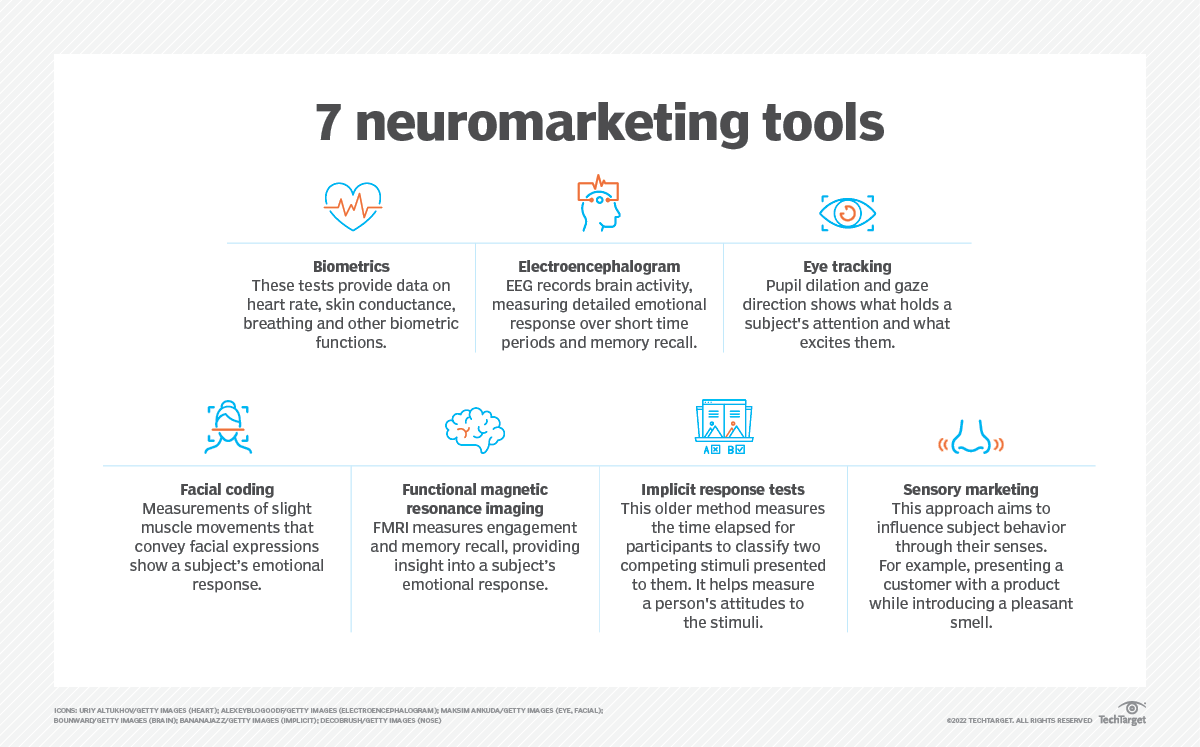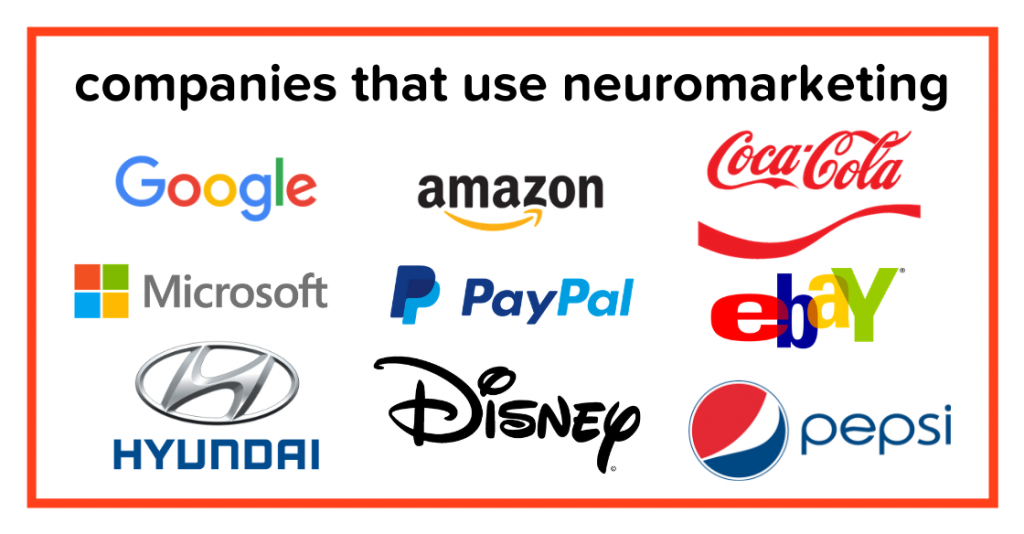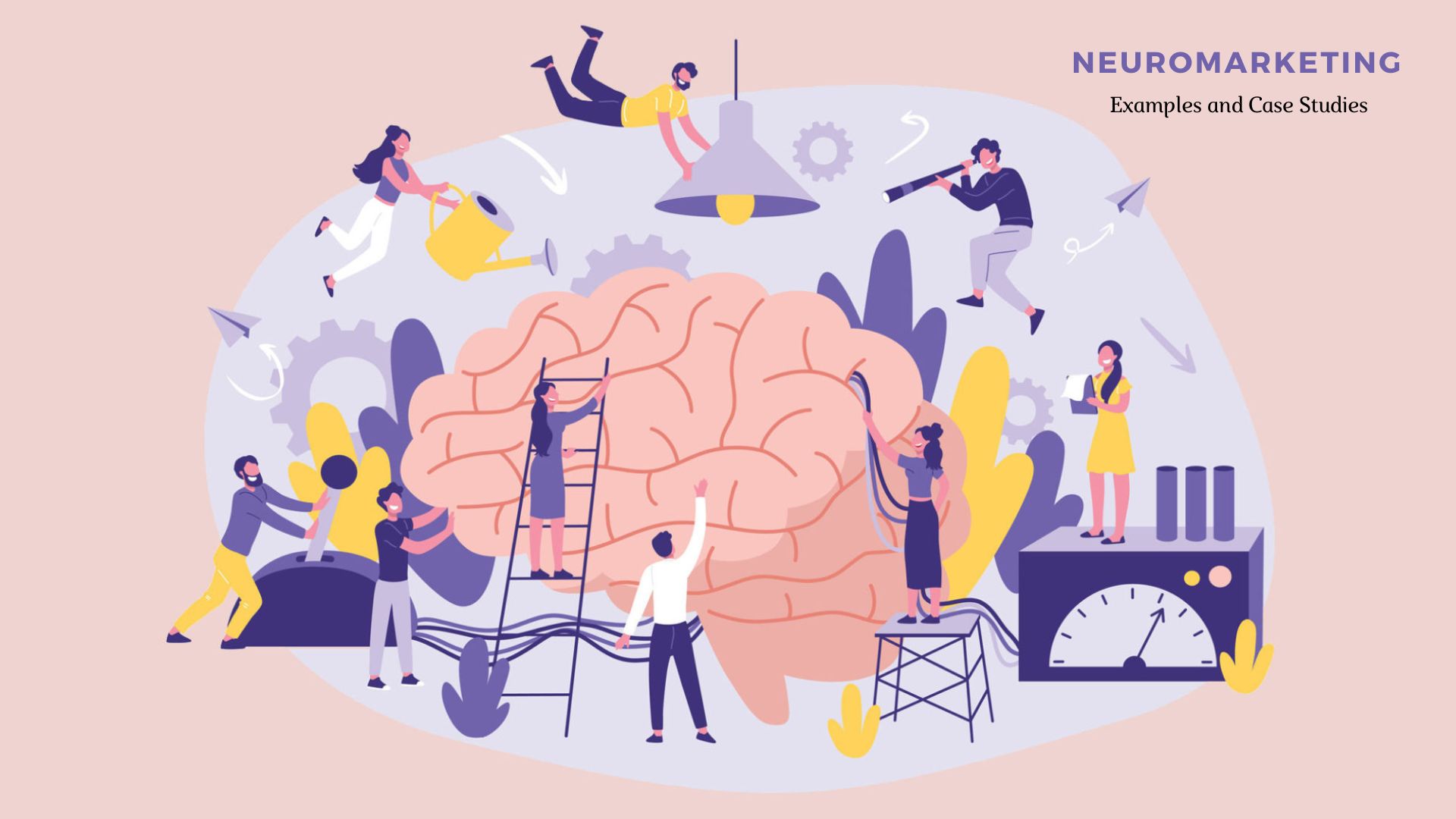Neuromarketing combines the study of psychology, neuroscience, and marketing to understand consumer behavior and decision-making processes.
Neuromarketing has been around since the 1990s, but it gained popularity in the early 2000s. Today, it’s a rapidly growing industry with businesses of all sizes using Neuromarketing techniques to gain an edge in the competitive market.
In today’s digital era, where consumers are constantly bombarded with advertisements, it’s becoming more and more important to understand what motivates their behavior. This is where Neuromarketing comes in. By using scientific techniques to measure and analyze brain activity, Neuromarketers can gain insights into what makes consumers tick and use that information to create effective marketing campaigns.
So, are you ready to dive deeper into the world of Neuromarketing? Let’s go!
Table of Contents

What is Neuromarketing?
Now that we’ve covered the basics, let’s explore Neuromarketing in more detail.
As we mentioned earlier, Neuromarketing is the study of consumer behavior and decision-making processes using a combination of psychology, neuroscience, and marketing. This approach allows businesses to gain insights into what motivates consumer behavior and create marketing strategies that resonate with their audience.
At its core, Neuromarketing is based on the idea that much of our decision-making occurs on a subconscious level. By measuring and analyzing brain activity, Neuromarketers can gain insights into how consumers perceive and respond to marketing messages, which can help businesses create more effective campaigns.

Why is Neuromarketing important for businesses?
Neuromarketing is especially important for businesses in today’s competitive market. With so many brands vying for consumer attention, it’s becoming increasingly difficult to stand out. By understanding what motivates consumer behavior, businesses can create marketing campaigns that are more engaging and persuasive, ultimately driving sales and increasing brand loyalty.
Overall, Neuromarketing is an innovative approach to marketing that has the potential to revolutionize the way businesses reach and engage with their audience. It’s a powerful tool that can provide valuable insights into consumer behavior, helping businesses create more effective marketing campaigns and achieve greater success.
How Does Neuromarketing Work?
So, how does Neuromarketing actually work? Let’s take a closer look.
Neuromarketing involves using a variety of scientific techniques to measure and analyze brain activity in response to marketing stimuli.
Here are some of the most common techniques used in Neuromarketing:
1. Eye-tracking
Eye-tracking technology is used to monitor where consumers look when they’re presented with a marketing message. By tracking eye movements, Neuromarketers can gain insights into what aspects of the message are most engaging or distracting.
2. EEG (electroencephalography)
EEG measures brain activity by recording electrical signals on the scalp. By analyzing these signals, Neuromarketers can gain insights into a consumer’s emotional and cognitive responses to marketing messages. You can read more about the EEG-based neuromarketing approach here.
3. fMRI (functional magnetic resonance imaging)
fMRI uses magnetic fields to measure changes in blood flow in the brain, which are indicative of neural activity. By measuring brain activity in response to marketing stimuli, Neuromarketers can gain insights into how consumers perceive and respond to marketing messages.
Neuromarketing is an innovative approach to understanding consumer behavior. While it has its limitations, it also offers a range of benefits over traditional marketing methods, making it an increasingly popular approach for businesses looking to gain a competitive edge. You can read more about fMRI here.

Advantages of Neuromarketing
Now that we’ve covered the basics of Neuromarketing and how it works, let’s take a closer look at some of the advantages it offers businesses.
Helps in better understanding consumer behavior
By measuring brain activity, Neuromarketing can provide insights into how consumers perceive and respond to marketing messages. This can help businesses better understand consumer behavior and create more effective marketing campaigns.
Enables businesses to create targeted marketing campaigns
With the insights gained from Neuromarketing, businesses can create more targeted and personalized marketing campaigns that resonate with their audience. This can lead to increased engagement, higher conversion rates, and ultimately, greater sales.
Provides insights on product design and packaging
Neuromarketing can also be used to gain insights into how consumers perceive and respond to product design and packaging. By measuring brain activity in response to different design elements, businesses can identify which elements are most appealing to consumers and use this information to create more effective product designs and packaging.
Overall, Neuromarketing offers a range of benefits for businesses looking to better understand their audience and create more effective marketing campaigns. By using the insights gained from Neuromarketing, businesses can improve their marketing efforts, increase engagement, and ultimately drive sales and revenue.
Disadvantages of Neuromarketing
While Neuromarketing offers a range of benefits for businesses, there are also some potential disadvantages to consider.
Expensive techniques and equipment
The techniques used in Neuromarketing, such as EEG and fMRI, can be expensive and require specialized equipment and expertise. This can make it difficult for smaller businesses to invest in Neuromarketing.
Ethical concerns surrounding privacy and data protection
Neuromarketing involves collecting and analyzing data on consumers’ brain activity, which can raise ethical concerns around privacy and data protection. It’s important for businesses to be transparent about how they collect and use this data and to ensure that they are in compliance with relevant laws and regulations.
It’s worth noting, however, that many of these concerns are not unique to Neuromarketing and are also applicable to other forms of data collection and analysis. With proper planning and ethical considerations, the potential drawbacks of Neuromarketing can be minimized, and the benefits can be fully realized.
Neuromarketing usage in different industries
Neuromarketing has gained popularity in a wide range of industries in recent years, and businesses in different sectors are finding ways to leverage its benefits.
Let’s take a closer look at some examples of Neuromarketing in different industries and how businesses are benefiting from it.
Healthcare
Neuromarketing is increasingly being used in the healthcare industry to gain insights into patients’ decision-making processes and improve the patient experience. For example, researchers have used EEG to study patients’ responses to different types of medical advertising, such as direct-to-consumer ads for prescription drugs.
Retail
Retailers are using Neuromarketing to better understand consumer behavior and create more effective in-store experiences. For example, some retailers have used eye-tracking technology to study how customers move through their stores and which products they spend the most time looking at.
Entertainment
Neuromarketing is also being used in the entertainment industry to test the effectiveness of marketing campaigns and gauge audience response to different types of content. For example, movie studios have used EEG to measure viewers’ emotional responses to movie trailers.
Other industries
Neuromarketing is also being used in a range of other industries, including finance, food and beverage, and automotive. For example, some financial institutions have used Neuromarketing to study investors’ responses to different types of investment advice, while some food and beverage companies have used EEG to measure consumers’ responses to different types of packaging.
Overall, Neuromarketing is proving to be a valuable tool for businesses in a wide range of industries, helping them better understand their customers and create more effective marketing campaigns. By leveraging the insights gained from Neuromarketing, businesses can gain a competitive edge and drive growth and revenue.

Real-world Examples of Neuromarketing
Neuromarketing has been used by a number of large companies to improve their marketing strategies and boost sales. Here are two real-world examples of Neuromarketing in action:
Coca-Cola
In 2012, Coca-Cola used Neuromarketing techniques to create a successful ad campaign. The company used EEG and eye-tracking technology to measure viewers’ emotional and cognitive responses to different ad concepts. Based on the insights gained from this research, Coca-Cola created an ad that featured smiling, happy people drinking Coca-Cola in a range of social settings. The ad was a success, helping to boost sales and improve the brand’s image.
Nestle
In 2014, Nestle used Neuromarketing to redesign the packaging for its KitKat chocolate bars. The company used EEG to measure consumers’ emotional responses to different packaging designs, testing factors such as color, shape, and logo placement. Based on the insights gained from this research, Nestle redesigned the packaging to feature a larger, more prominent logo and a more vibrant color scheme. The new packaging design was a success, helping to boost sales and improve the brand’s visibility on store shelves.
Neuromarketing is like a secret weapon that businesses can use to create killer marketing campaigns and rake in the dough. By tapping into consumers’ emotional and cognitive responses to different stimuli, companies can create highly-targeted and irresistible marketing messages that connect with their audience on a deeper level. It’s like mind-reading, but for marketing purposes!
Popular Case Studies for Neuromarketing
There are several popular case studies that illustrate the power of Neuromarketing in action. Here are two examples:
Frito-Lay
In 2011, snack food giant Frito-Lay conducted a study using EEG to measure consumers’ emotional responses to different product packaging designs. The research found that people were more likely to buy chips with simple, bold designs rather than those with cluttered or complicated packaging. Based on this insight, Frito-Lay redesigned the packaging for their Sun Chips brand to feature a simpler, more eye-catching design. The new packaging design was a hit, helping to increase sales and improve the brand’s visibility on store shelves.
PepsiCo
In 2012, soft drink giant PepsiCo conducted a study using fMRI to measure consumers’ brain activity in response to different soft drink flavors. The research found that people had stronger positive emotional responses to flavors like cherry and vanilla compared to other flavors. Based on this insight, PepsiCo introduced new flavors like Cherry Vanilla and Diet Cherry Vanilla to their product line, which proved to be a hit with consumers.

These case studies demonstrate how Neuromarketing can provide valuable insights into consumer behavior and preferences, helping businesses to create more effective marketing strategies and drive growth and revenue. By using advanced neuroscience techniques to measure consumers’ emotional and cognitive responses to different stimuli, companies can gain a deeper understanding of what motivates people to buy, and use that insight to craft marketing messages that really resonate.
These case studies prove that by using cutting-edge neuroscience techniques, companies can unlock the secrets of consumer behavior and preferences, and use that knowledge to create marketing strategies that really pack a punch.
Conclusion
In summary, Neuromarketing is a field that combines psychology, neuroscience, and marketing to gain a deeper understanding of consumer behavior and create more effective marketing strategies. By measuring consumers’ emotional and cognitive responses to different stimuli, businesses can craft messages that resonate with their audience and drive growth and revenue.
Despite some limitations and ethical concerns, Neuromarketing has become an important tool for businesses in today’s digital age, helping them stay ahead of the competition and connect with consumers in more meaningful ways.

Ali is a digital marketing blogger and author who uses the power of words to inspire and impact others. He has written for leading publications like Business2Community, Inc. Magazine, and Marketing Profs. When not writing, he enjoys spending time with his family.
